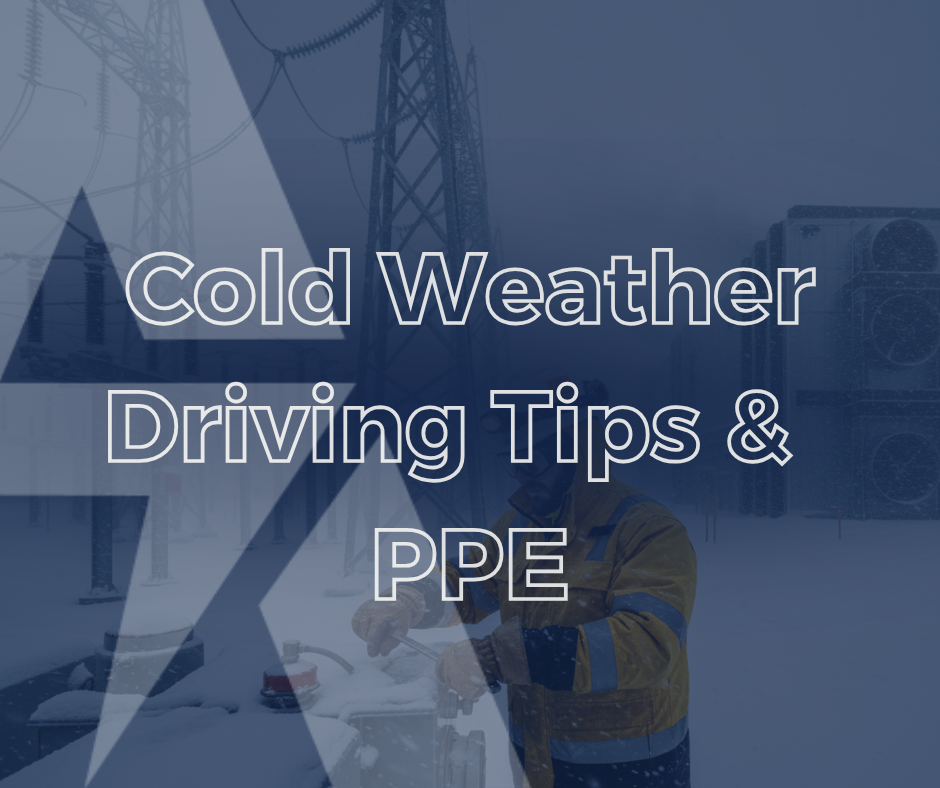
I.Beyond the Five Nines
The power and energy industry operates under the non-negotiable standard of maintaining uptime, yet when winter weather strikes, that reliability is challenged by unique, non-negotiable safety hazards. Working in cold weather—generally defined by OSHA as any temperature below 50°F, or any temperature when factoring in wind chill—introduces two primary risks to field personnel: environmental exposure and logistical danger. For field workers, mitigating exposure starts with the cold weather PPE imperative. Appropriate gear must balance warmth, dexterity for complex tasks, and strict compliance (such as integrating with Arc Flash requirements). Simultaneously, the high rate of weather-related vehicle incidents demands a focus on proactive vehicle and travel planning.
II. The Science of Cold Weather PPE
Protection from the cold requires a strategic approach that goes far beyond simply throwing on a heavy coat. The foundation of cold weather PPE is the three-part layering system, which is crucial for preventing dangerous conditions like hypothermia by managing moisture and heat retention. This is key for the layering system cold weather construction workers use to adapt to rapidly changing conditions and exertion levels.
- Wicking Layer (Base): This layer lies closest to the skin. Its function is to rapidly wick moisture (sweat) away from the body, preventing it from chilling the core. Materials like polypropylene, polyester, and other synthetics are ideal; cotton must be avoided at all costs, as it retains moisture and dramatically increases the risk of hypothermia.
- Insulation Layer (Mid): This layer’s job is to trap body heat. Fleece, wool, or down materials create air pockets that provide excellent thermal insulation.
- Outer Layer (Shell): This layer is the final defense against external elements, protecting the wearer from wind and precipitation. The shell must be waterproof and windproof while still allowing some ventilation to prevent moisture buildup from the inside.
Crucial areas for heat loss—the head, hands, and feet—require special attention. Up to 50% of body heat can be lost through an uncovered head; therefore, insulated hard hat liners and hoods are mandatory. For hands, protection must be multi-functional: lined, waterproof gloves or mittens are necessary, but they must also maintain the dexterity required for critical tasks like gauge reading or component handling. Similarly, feet need insulated, waterproof boots to prevent conditions like trench foot.
Finally, for the energy sector, cold weather PPE must seamlessly integrate with required safety gear. Arc Flash and flame-resistant (FR) requirements dictate that non-compliant materials cannot be worn over rated garments. Specialized FR base layers and mid-layers are designed to provide warmth while meeting protective standards, ensuring that life-saving protection is never compromised for comfort.
III. Driving Safety and Vehicle Preparedness
For many field workers, the greatest hazard of the winter season is not the job site itself but the drive to and from it. Effective driving safety in winter power sector operations begins long before the first snowflake falls.
Vehicle Maintenance and Kit
Mandatory vehicle checks include ensuring deep tire tread depth, proper tire pressure (which drops in the cold), peak battery health, and winterized fluid levels. Every vehicle must carry a robust emergency kit. This kit should contain flares, a tow rope, sand or kitty litter for traction, warm blankets, high-calorie, non-perishable food, and a fully charged backup communication device.
Driving Techniques
Personnel must be trained to adjust their operation for winter conditions. This includes reducing speed, increasing following distance dramatically (from 3-4 seconds to 8-10 seconds), and maintaining awareness of “black ice,” which often appears as wet road pavement. Crucially, drivers must never use cruise control on wet, snow-covered, or icy roads, as a sudden loss of traction can cause rapid, uncontrollable hydroplaning. For long trips or work in remote areas, clear travel plans and mandated check-in procedures are a non-negotiable part of the daily operational safety brief.
IV. Winter is Coming: Prepare Now
Proper preparation—from head-to-toe cold weather PPE to vehicle readiness—is the bedrock of safe winter operations. APS prioritizes the safety of its personnel, who are often tasked with maintaining critical infrastructure under the most challenging travel conditions.
APS personnel are equipped and trained not only in advanced cold weather PPE strategies but also in rigorous driving safety in winter power sector techniques, minimizing risk and ensuring reliability. Contact APS today to ensure your site is staffed with professionals fully prepared for the dual demands of operational excellence and extreme winter safety.






